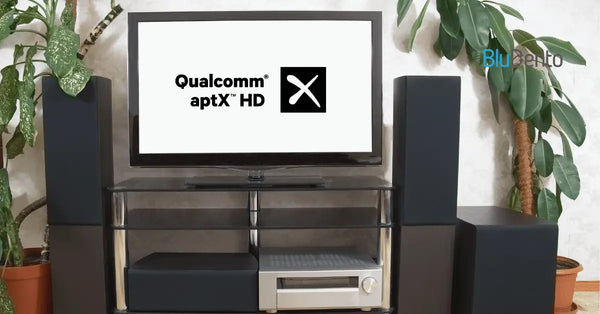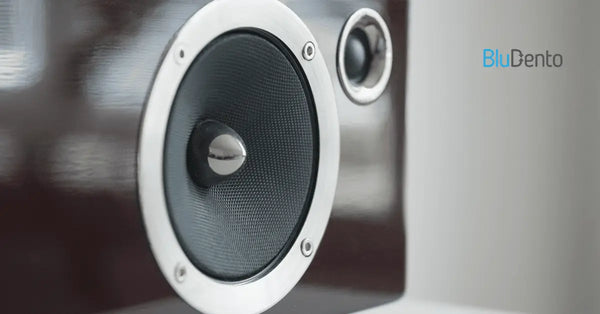How a Stereo Streaming Receiver Enhances Your Sound System

Imagine a world where your favorite music, podcasts, or movies flow seamlessly through your living room without a single wire in sight. That’s the magic of a stereo streaming receiver. This nifty device bridges the gap between traditional audio systems and modern wireless tech, letting you stream high-quality sound from your phone, tablet, or laptop directly to your speakers. Whether you’re a casual listener or an audiophile, the versatility of a stereo streaming receiver makes it a game-changer.
Unlike bulky old-school receivers, these compact powerhouses support Bluetooth, Wi-Fi, and even voice control via Alexa or Google Assistant. They’re perfect for multi-room setups, letting you sync music across your entire home. And with support for lossless audio formats like FLAC and ALAC, you’ll hear every note as the artist intended.
But here’s the kicker: not all stereo streaming receivers are created equal. Some prioritize ease of use, while others focus on audiophile-grade fidelity. The key is finding the right balance for your needs. Spoiler alert—we’ll dive deeper into choosing the perfect one later!

How to Choose the Perfect Stereo Streaming Receiver for Your Setup
Choosing a stereo streaming receiver feels like picking the right pair of headphones—it’s personal. Start by asking: What do you value most? Sound quality? Connectivity? Smart features? Let’s break it down:
- Audio Quality: Look for support for high-resolution formats (e.g., 24-bit/192kHz) and compatibility with streaming services like Tidal or Spotify.
- Connectivity: Does it support Bluetooth, Wi-Fi, or both? Some models even offer Ethernet ports for rock-solid wired connections.
- Multi-Room Capabilities: Brands like Sonos or Yamaha let you sync multiple devices for whole-home audio.
- Voice Control: If you’re into smart homes, ensure it works with your existing ecosystem (Alexa, Google Assistant, Apple HomeKit).
- Price vs. Performance: Entry-level models start around $200, while premium options like the Marantz NR1710 can hit $1,000+.
Still overwhelmed? Check out the comparison table below to narrow your options:
| Model | Audio Formats | Connectivity | Smart Features | Price |
|---|---|---|---|---|
| Bludento B2 | LDAC, aptX HD, SBC, AAC | Bluetooth | - | $99 |
| Yamaha R-N803D | FLAC, ALAC, DSD | Wi-Fi, Ethernet | Spotify Connect | $699 |
| Denon DRA-800H | MQA, DTS Play-Fi | Wi-Fi, HDMI | AirPlay 2, Alexa | $899 |
Step-by-Step Setup: Mastering Your Stereo Streaming Receiver
Setting up a stereo streaming receiver isn’t rocket science, but a few missteps can ruin the experience. Follow this foolproof guide:
- Unbox and Position: Place the receiver near your speakers and router for optimal signal strength.
- Connect Speakers: Use high-quality speaker wire for the best sound. Most receivers support 2-channel or 5.1 surround setups.
- Power and Network: Plug in the receiver, then connect it to your Wi-Fi or Ethernet.
- Download the App: Brands like Sonos and Yamaha offer intuitive apps for setup and control.
- Sync Devices: Pair your phone, tablet, or TV via Bluetooth or Wi-Fi. Test streaming services like Apple Music or Tidal.
- Calibrate: Use the app’s room calibration tool to optimize sound for your space.
Pro Tip: If you’re using a TV, enable “TV Mode” in the app to reduce latency and sync audio perfectly.
Stereo Streaming Receiver vs. Traditional Receivers: A Data-Driven Comparison
Let’s settle the score: Is a stereo streaming receiver worth ditching your old receiver? Here’s the cold, hard data:
| Feature | Stereo Streaming Receiver | Traditional Receiver |
|---|---|---|
| Wireless Streaming | Yes (Bluetooth/Wi-Fi) | No |
| Smart Home Integration | Yes (Alexa/Google Assistant) | No |
| Multi-Room Support | Yes | No |
| Setup Complexity | Easy (App-based) | Moderate (Manual wiring) |
| Price Range | $200–$1,500 | $100–$800 |
Verdict: If you value convenience and modern features, the stereo streaming receiver wins hands down. Traditional receivers still have a place for purists who prioritize analog sound, but they’re falling behind in the smart era.
Hidden Features of Top Stereo Streaming Receivers You Can’t Ignore
Most users only scratch the surface of what these devices can do. Here are some underrated features to exploit:
- Voice-Activated Volume Control: Adjust sound levels without lifting a finger.
- Auto Room Calibration: Use built-in mics to tweak bass, treble, and reverb for your room’s acoustics.
- Phono Preamp Support: Turntables lovers rejoice—some models include direct vinyl input.
- Offline Playback: Stream music from your phone’s library without an internet connection.
- Gaming Mode: Reduce lag for immersive gaming audio.
For example, the Marantz NR1710 includes a “Pure Direct” mode that bypasses unnecessary circuitry for audiophile-grade clarity.
Troubleshooting Common Issues with Stereo Streaming Receivers
Even the best devices hit snags. Here’s how to fix the most common problems:
- No Sound? Check speaker connections and ensure the receiver is set to the correct input.
- Buffering? Move the receiver closer to your router or switch to a 5GHz Wi-Fi band.
- Voice Control Not Working? Re-link the receiver to your Alexa or Google account in the app.
- App Crashing? Update firmware via the manufacturer’s website.
Pro Tip: If all else fails, unplug the receiver for 30 seconds and restart it. Sometimes, old-school fixes work best!
The Future of Audio: How Stereo Streaming Receivers Are Evolving
The stereo streaming receiver isn’t just a trend—it’s the future. With advancements in AI-driven sound optimization and mesh network technology, these devices will soon offer:
- Self-Adjusting EQ: AI analyzes your music and tweaks settings in real time.
- Ultra-Low Latency: Perfect sync for movies and gaming.
- Solar-Powered Models: Eco-friendly designs for the sustainability-minded.
Brands like Sony and Bludento are already teasing prototypes with these features. The message is clear: wireless audio is here to stay.
FAQs About Stereo Streaming Receivers
Can I use a stereo streaming receiver with older speakers?
Absolutely! Most models support legacy speakers via standard speaker wire connections.
Do I need Wi-Fi for basic playback?
No—you can still use analog inputs (e.g., turntables) without an internet connection.
Are stereo streaming receivers compatible with Apple AirPlay?
Many high-end models, like the Denon DRA-800H, include AirPlay 2 support.
Can I control multiple receivers with one app?
Yes, systems like Sonos let you manage multi-room audio from a single interface.
Do these receivers support lossless audio?
Check for support of FLAC, ALAC, or MQA formats for studio-quality sound.
Will a stereo streaming receiver improve my TV’s sound?
Pair it with a soundbar or surround system for cinematic audio.
Conclusion
A stereo streaming receiver isn’t just another gadget—it’s your ticket to a smarter, richer audio experience. Whether you’re upgrading a home theater or building a multi-room music system, the right receiver can transform how you listen. From seamless streaming to AI-driven sound optimization, the future of audio is wireless, intelligent, and utterly immersive. Ready to cut the cord and dive in?
Final Tip: Always read reviews and check return policies before buying. Your ears—and your wallet—will thank you!










